
Decoding the name
First things, first. What exactly does PUPPPs stand for? It’s an acronym for a pregnancy rash; the letters stand for Pruritic Urticarial Papules and Plaques of Pregnancy. Care to say that 10 times fast? According to the American Osteopathic College of Dermatology (AOCD), PUPPPs typically develops during the third trimester of pregnancy or immediately in the postpartum period. Usually, the papule and plaques develop within stretch marks that are so common during pregnancy.
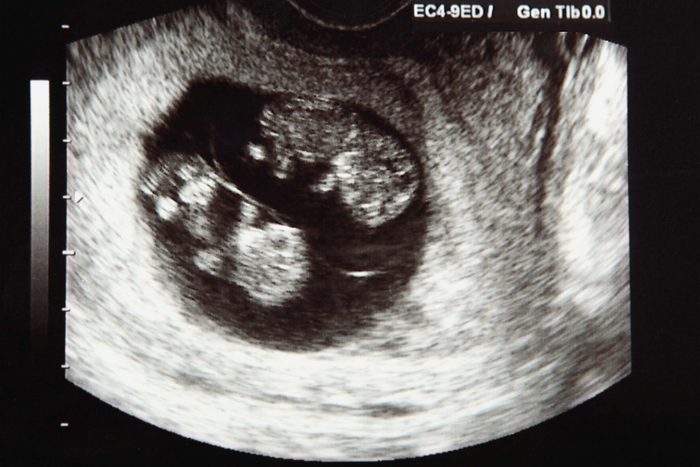
First-time moms are at greater risk of PUPPPs
“PUPPPs rash is the most common dermatological symptom we see in pregnancy,” explains Brian Levine, MD, board-certified obstetrician-gynecologist and reproductive endocrinologist and the New York practice director for the Colorado Center for Reproductive Medicine (CCRM). About one in 250 pregnant women contracts the rash; Dr. Levine estimates that about 75 of the patients he sees with PUPPPs are first-time moms. You’re also at increased risk for developing PUPPPs pregnancy rash if you underwent IVF or are pregnant with multiples, he says.
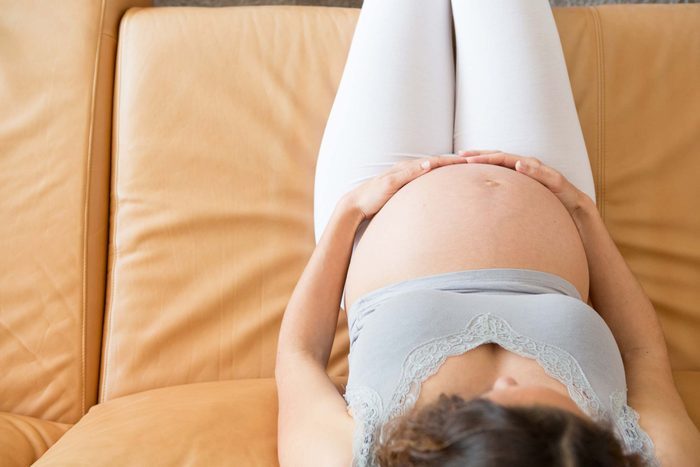
No one knows exactly what causes PUPPPs
Avoiding PUPPPs rash should be as easy as knowing what causes it, right? Unfortunately, it isn’t that easy. The jury is still out on exactly what causes expecting moms to develop this pregnancy rash. “There is a theory that some people believe it could be due to increased abdominal distention,” Dr. Levine says, meaning that some moms might react negatively to stomach growth. “I think it is probably the hormone levels that cause this to happen in women who have twins and triplets because the rash isn’t only located on the abdomen.” If you’re having abdominal pain that doesn’t go away, though, that may mean something different altogether so be sure to see a doctor.
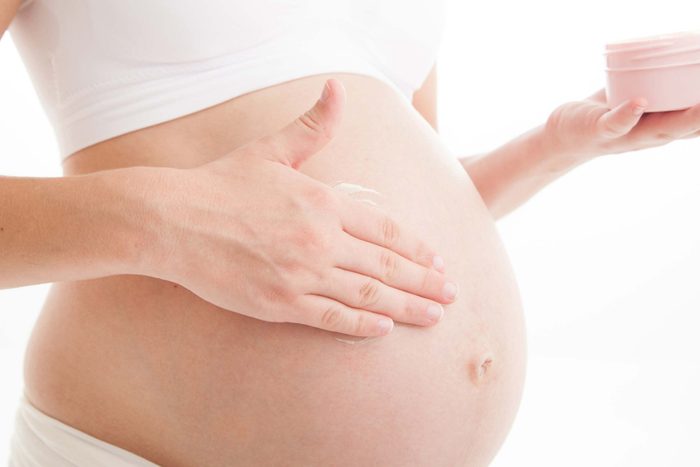
Spot the symptoms of a PUPPP rash
If you think you might be getting PUPPPs, there are a few symptoms to keep an eye out for. “PUPPPs has a characteristic look,” explains Dr. Levine. It starts with red, bumpy papules that are within the stripes or striations (stretch marks) on your abdomen, but not your belly button, he says. Additionally, you may experience other skin and hair surprises during pregnancy.
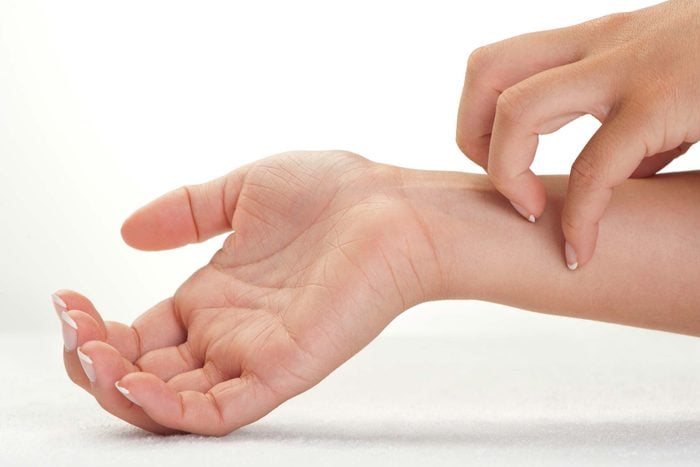
The rash might spread
“After it starts on your belly, all bets are off,” Dr. Levine warns. It can spread to your extremities, including your hands, arms, and legs, though it’s uncommon to see PUPPPs breakouts on your face, palms, or the soles of your feet. “It can also cause plaques, the other ‘P’ within the ‘PUPPP.’ The plaques are itchy and this is what women complain about.” The spreading may occur over the course of a few days, the AOCD notes, adding that in fair-skinned patients, the lesions may be surrounded by a lighter halo.
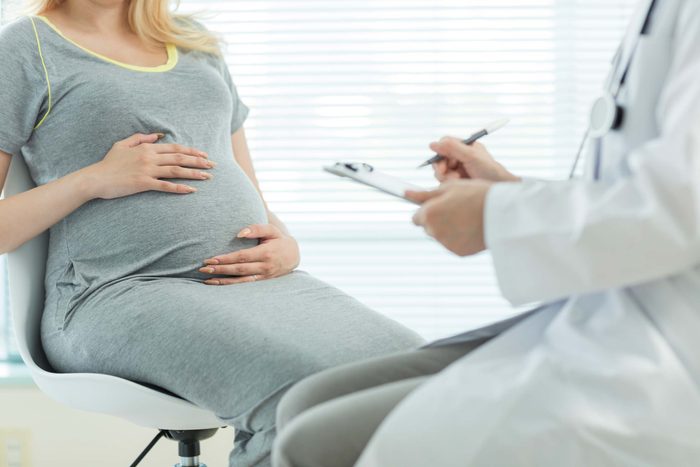
Get a diagnosis
Knowing the symptoms isn’t enough. Expecting moms should see their doctor for a formal diagnosis because a rash can mean other things during pregnancy. “We always worry about a rash in a woman who is pregnant, because it could be measles or chickenpox, which can be really dangerous to a baby,” says Dr. Levine. In fact, the Mayo Clinic explains that chickenpox during pregnancy may be a cause for concern for both you and your baby. For example, you may develop pneumonia and your baby—depending on when chickenpox develops during the pregnancy—may develop a birth defect or a life-threatening infection. But PUPPPs on its own shouldn’t be alarming. “PUPPPs is a relatively benign condition.” In fact, the AOCD explains that although the pregnancy rash can be annoying, it’s not serious and usually resolves soon after delivery.
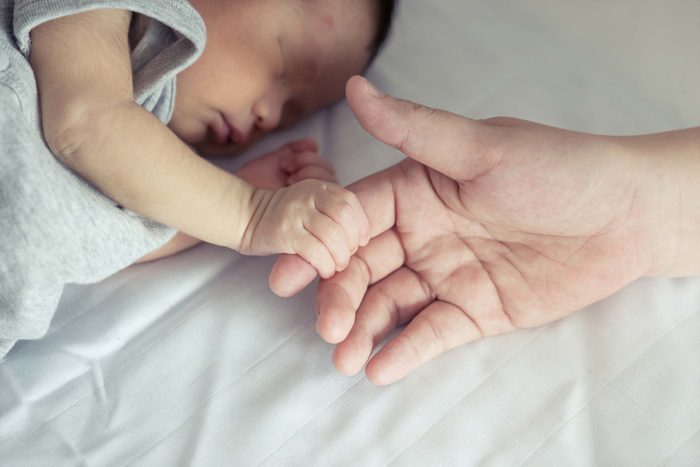
Ease PUPPP symptoms
Good news! There is a cure for PUPPPs. The bad news? The cure is giving birth, so you may have to live with this pregnancy rash for many months. “In general, the itchiness is cured by delivery, but the itchiness can actually immediately worsen for the couple days after delivery,” Dr. Levene says. “It generally resolves by two weeks after birth.” You can manage your symptoms in the meantime. He suggests using a warm (not hot) oatmeal bath to get relief from the itchiness. A mid-potency, topical steroid or a non-drowsy anti-histamine can also help with the bothersome symptoms that come with this rash. The Merck Manual suggests applying a corticosteroid cream like triamcinolone and adds that in severe cases, a corticosteroid like prednisone may be given orally. If you have any questions or concerns about treating the symptoms, check with your OB.
